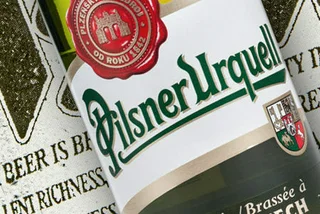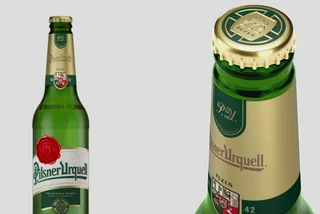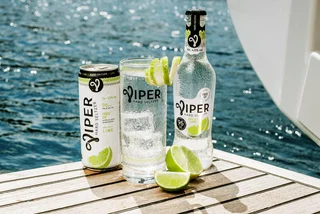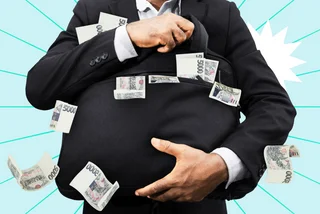Grant McKenzie is Chief Marketing Officer for Asahi Europe, the owner of four historic breweries in the Czech Republic: Pilsner Urquell, Gambrinus, Velkopopovický Kozel, and Radegast, which together comprise some 50% of the local market. Expats.cz spoke with McKenzie about the state of Czech beer culture in the face of the coronavirus, as well as the popularity of non-alcoholic beers, the use of PET plastic bottles, and the popularity of the original Pilsner beer, both at home and abroad.
This interview has been edited for length and clarity.
This is a strange conversation to have because everything’s up in the air with coronavirus and Brexit. So maybe I should start by simply asking how has the coronavirus affected Pilsner Urquell.
Well, quite a lot, like all the brewery business in the Czech Republic. If we’re talking specifically about the Czech Republic, the on-trade market was down 30–35 percent last year. We had a good recovery, actually, very strongly in the summer. If you look at June, July, August — which is giving us hope for the future — the return, people’s return, was extremely fast. But you know, it finished pretty badly. So it’s a heavy decrease. January was a massive decrease, as well, of course, given by the lockdown. In the domestic market, we’ve had, like many people, big, big challenges.
On the international markets, it depends on the country. Not every country is affected, because it depends on the size of the hospitality market, the on-trade, which is not the same everywhere. The markets in our business most effected are the UK, the Czech Republic and the Netherlands, because in those markets, the on-trade is half the market, approximately. But then if you go to Poland, only 10 percent of the beer market is actually in the on-trade, so the relative impact is far smaller. It’s still not been a good year, but, relatively, it’s a much smaller impact.
Looking to the UK, the coronavirus has been coupled with Brexit to affect exporters. Has Brexit been a big problem for Pilsner Urquell?
Not now, because the lockdown is a far bigger problem. It's kind of like we haven't got to Brexit yet, because the pubs aren't open, so there’s no demand anyway, in draft beer at least. For bottled products, for packaged products, we have quite a small market in the UK. So far, I wouldn’t call them any major issues. I think the issues are to come, heading down the road.
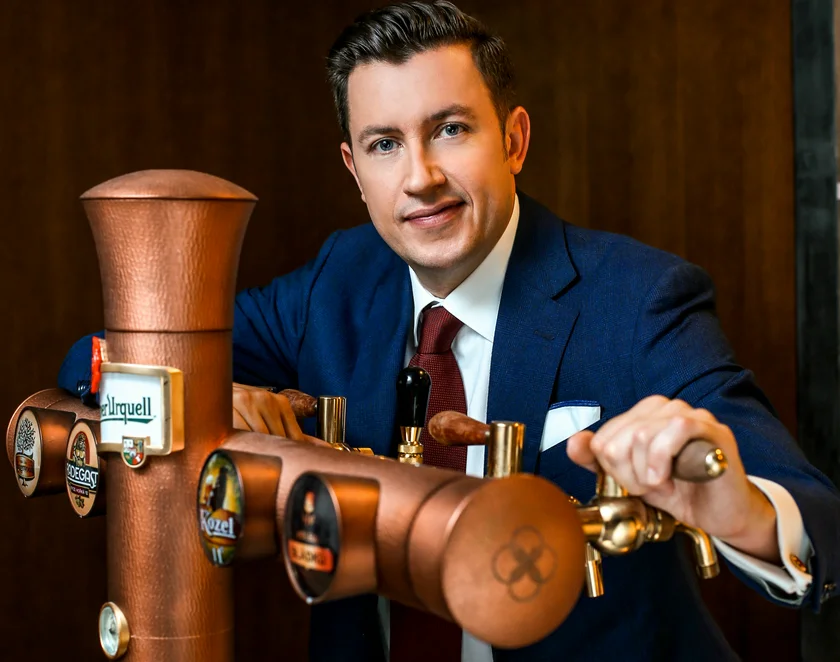
What has changed since Asahi took over the ownership of Pilsner Urquell in early 2017?
We’ve changed a number of things. Firstly, our focus on what we want to do. We have this vision we call “inspire people to drink better,” which has two meanings for us. One is to promote, more deliberately, better beers: premium, super-premium, higher-quality beers. And secondly, to drive, substantially, our non-alcohol beer business: to actually switch Europeans — particularly Europeans — out of alcohol beer, into non-alcohol beer on some occasions, because, you know, probably Europeans shouldn't drink any more alcohol. What we need to do is build better products and better choices in non-alcohol beer. So you'll see that our focus in the last three, four years has been very, very substantial. In the Czech Republic, if you live here, you’ll know about Birell. We've done a huge, huge support of that brand. It’s been our fastest growing brand for the last five years, by far. Today, in the Czech business, Birrell is about 10 percent of our volume. So 10 percent of our volume is non-alcohol beer, which might surprise some people. It’s substantial. It’s not a niche product.
So the non-alcohol beer sector has been growing?
Substantially. Around Europe, in the businesses we look after — I'm talking Romania, Poland, Italy, the Netherlands, the Czech Republic, Slovakia, Hungary, UK — it is approximately 35 percent per year compound growth for non-alcohol beer for five years in a row. Nothing in the beer category is coming close to reaching these growth rates. So when you talk about craft beer or speciality beer, it’s been growing well, but you’re looking at 5–10 percent growth. Classic lager is declining -1 percent, so it’s stable to zero. And you're talking 35 percent growth for non-alcohol. It's indisputably the fastest-growing sector.
Pilsner Urquell has actually done some steps towards craft beer and worked with craft brewers over the past couple of years. Can we expect more along those lines going forward?
Definitely. Part of the strategy of drinking better is to promote craft beer and non-lager styles, because we consider, for our business, that beer is best enjoyed in variety. And that by getting into non-lager styles, you open up the opportunity for different occasions. What I'm really talking about is things like food pairing. So beyond — and I mean this politely — but beyond beer geeks who just love experimenting, for normal people, the reason they don't get into specialties is they find it hard to understand. What am I supposed to drink this with? The wine industry has done a good job of telling people that you should drink wine with food. And actually, that’s a huge occasion as markets mature. So what we want to do with specialties is start to get into those.
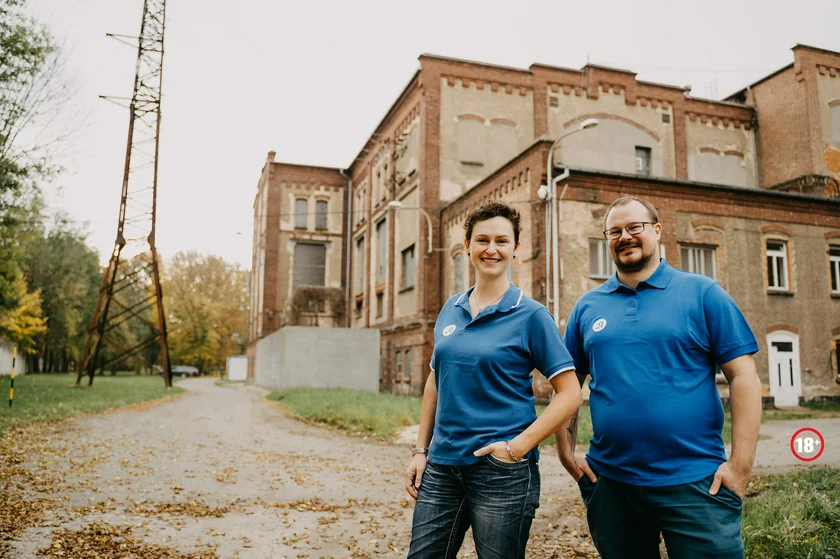
We’ve just opened our own new mini-brewery called Proud, which was a derelict building in the Pilsen brewery, the old energy house. We gave it to two of our employees, and they run it. We gave them the money, but they make all the management decisions. They make all the product decisions, everything. They’ve started making very, very different products — Rye IPA, I think, is their best product so far. With them, we’ll collaborate with others. We’ve worked with Matuška, who we respect a lot. During the Pilsner Fest, not last year, but two years ago now, when it was done in 2019, we invited six or seven craft breweries to come and use that opportunity — there are about 50,000 people — to sell their products, free of charge.
We don’t see them as competitors. We see them as an important part of building the beer category for the future. It can’t just be desítka, dvanáctka. It also needs to be other styles. I think the Czech Republic can actually have a future where that part of the market is much more substantial.
For a while it seemed like Master was going to be part of that — I was finding Master more often in restaurants and in culinary settings. Lately Master seems to have been set aside. Is that brand going to be important for Pilsner Urquell going forward?
I don’t think it’s a priority. We ran a project called Volba sládků, which means the choice of the brewmaster, and essentially what we wanted to do there was to bring these new styles of beer to our Pilsner Urquell restaurants or bars. So that consumers would have a choice, once a month, we rotate the beers. We used the Master brand there, largely because we didn't have another brand. It gives people an opportunity to try different beers. And it gave us the chance to improve our brewing skill at these new types of beers, because we were basically experts at making ležáky, but not necessarily at making IPAs. I don’t think Master is the right brand that will scale in the future. I think Proud, this new new venture, is more authentic and will probably be the focus.
How much is the current production of Pilsner Urquell?
You know, that's not something we particularly disclose. And to be honest right now, I wouldn't be able to tell you after all the changes.
There was a report a couple of years ago that production was going to go up by about a third to about three and a half million hectoliters. Was that expansion done?
Yeah, so Pilsner has been growing, there’s no secret there. Particularly at home, Czech and Slovakia, there has been very, very big growth — the brand is very powerful here. It’s very admired, and as Czechs got more money, they naturally started to trade up. It’s what we call premiumization. What we’ve done is also, particularly in Prague, was focus on building the restaurants and bars around tank Pilsner Urquell, the very best experience for that beer. And we’ve seen very strong growth rates. So yes, we expanded the brewery to be able to make more beer for the domestic and international markets. Of course, right now it’s taken a little bit of a hit, but that will come back — that’s a blip. We expect to use that capacity within five or six years.
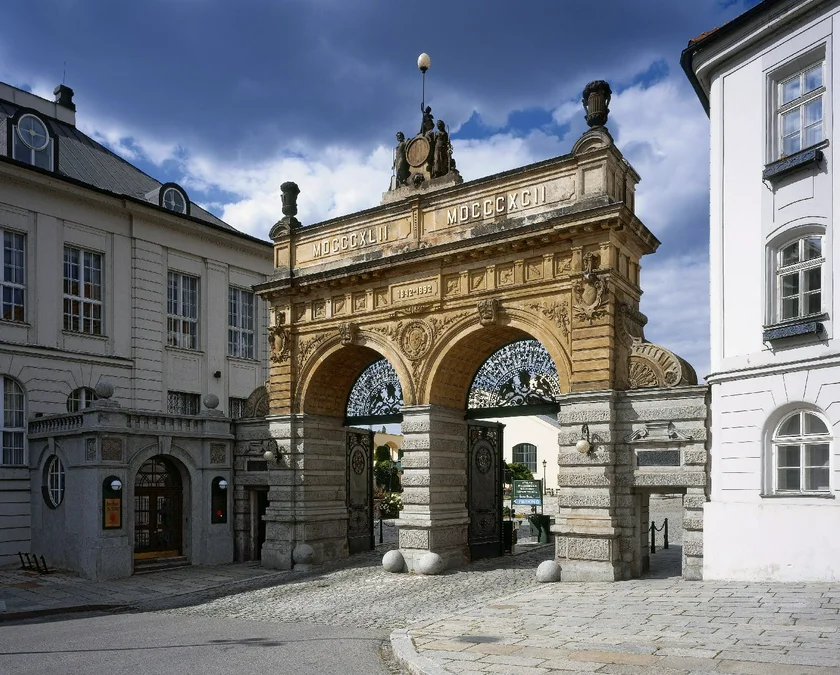
Until the coronavirus, I was hearing a lot about tank pub growth abroad. There are tank pubs in Germany, in Slovakia and in the U.K. Not withstanding the coronavirus, was that still a growing factor for Pilsner Urquell in exports?
Definitely, in Europe. We’ve also got big business in places like Korea and Japan, but we’re not about to ship tankers there. But in Sweden and in the Nordics generally, but particularly in Sweden, in Germany, Austria, in Slovakia, Hungary, Romania, Italy and the U.K., we have tank pubs, and they were growing at the rate of two or three or four per year. Obviously now, the last 12 months there haven’t been any new ones, for obvious reasons, but we expect it to go back. And that’s a huge innovation in those markets. Obviously, for the guy living in Czech it’s normal to have tank beer. But this is absolutely not the case in London. This is absolutely not the case in Stockholm, that this is normal. It’s really an innovation. "What do you mean? Like direct from the brewery, unpasteurized beer? Wow!” So it gave us a real edge in those outlets. How do you get the consumer’s attention? Well, we’ve got this giant tank and it says it’s brewed fresh. It gave us a huge edge in those pubs.
In terms of Pilsner Urquell’s exports to the U.S., it’s a very small share, I know.
I would call them stable. They’re plus or minus 1 or 2 percent a year. They're not really developing for us. It’s not a core market for Pilsner Urquell, to be honest.
That’s a pity. As someone who is proud of Czech beer and who enjoys introducing it to Americans, it’s always been hard for them good Czech lagers in good condition. I know the volumes are not huge, but I did admire what happened under the previous owners: they instituted a constant cold-chain for shipping, they switched over to brown bottles and greatly improved the quality of the imports. They reduced volumes, but they made sure that the quality was always at the top level. Are all of those changes still in place?
Sure. You know, it’s not a secret that if you taste the Pilsner Urquell in Prague in one of these pubs, it’s just like, “Wow, this is the best beer experience in the world.” But when you went to New York or London, and the beer was in a bottle and it was six months old, it didn’t taste like that. So how did we preserve that? The cold chain was key. We changed to brown bottles for the long overseas markets, like the U.S., where there was a long supply chain, and it helped us improve quality, I think indisputably. Has it hugely driven sales? You know, frankly not, but it improved.
I would say there was a very significant change we made as Asahi, as you asked me earlier. I’ll give you two examples where, almost the second week after changing ownership, myself and the CEO made changes. One, we were brewing a Pilsner Urquell lower-gravity version for Sweden, and we stopped that immediately. That’s not Pilsner Urquell. So we lost some business, but we think it’s right for the brand to not do that. And then we were making Pilsner Urquell in very, very small volumes in Russia. And we stopped that as well. So we now brew everything in Pilsen, every single drop.
And curiously, to your point on Russia, we export now directly from Pilsen. The price has doubled because you know, it’s much more expensive. You have import duties. But we actually sell more.
That’s good to hear, because the know-how of the Czech brewers should be part of what is sold. Part of what is appealing to consumers is that provenance and history. Is it hard to get people abroad to understand the actual historical importance of Pilsner Urquell? I've heard about people in Japan lining up when Pilsner Urquell has an event there, because history is so important for Japanese consumers, but it must be hard to get the message out elsewhere about Pilsner Urquell’s role in creating the entire category of Pilsner beer.
It’s not everyone’s most interesting thing. Not everyone’s that interested in who was the first. If you’re not into a category, do you care who made the first car? Do you make care who made the first motorbike? Do you care who made the first Pilsner? Not everyone does, let’s be honest. And then of course, explaining it. Because the word Pilsner or Pils has been used by everyone. People no longer think what it means. But that doesn’t mean we shouldn’t try.
And you’re right, in Asia — Japan and Korea, especially — we’ve had, I think if we’re honest, unexpected success. Korea is much bigger for Pilsner Urquell than the USA, after five years of starting from zero to where we are now.
That’s because history seems to be more important to those consumers. They’re more interested in the background of brands. And then the brewing process, with the fact that it’s made in Pilsen and done in a quite old-fashioned way they find very admirable, and they’re willing to pay more for it, which is a critical third point. In many other countries, you know, the Americans will say, “Yeah, I really admire it, but it’s quite expensive. I’ll buy something else.”
You mentioned that Pilsner Urquell has, as a brand, grown on the domestic market. With its four breweries in total — Pilsner Urquell, Gambrinus, Radegast and Kozel — the Pilsner Urquell group has roughly 50 percent market share. Is there a danger of growing too much? Would it be possible for a brewing group to stay in the good graces of the Anti-Monopoly Office with a market share over 50 percent?
You know, that’s not something we talk about, whether we’re 49 or 51. I think we have ambitions to make better beer here. I think some things we’ve done recently have deliberately dropped our share because we think they’re wrong for the beer category. What I’m referring to is the removal of PET from Gambrinus, Radegast, and Šariš in Slovakia.
You don’t use it?
We stopped selling it, yeah.
So the packaging is all cans and bottles?
Yes. There’s no PET for those brands. And ultimately, we’re reducing to zero PET within a few years.
Does that mean no large-format, 1.5-liter or 2-liter bottles?
No. And that’s lost us market share. That has lost us business, I can tell you. But we consider it the right thing to do for the category and our brands. We could get more market share by cutting prices and all these other things, but that's no interest to us and what we're doing with the craft side. We’re trying to build our position, but also help others, because we want the category of craft to be bigger here, because we think that’s a good future for the beer industry in Czech. I think when you’re the leader in the market, the question is “Are you responsible with your leadership? Do you do the right things about sustainability? Do you do the right things by society?” As opposed to “Are you 51 or 48 or 49?” I don't think those are material to people, you know. And they’re not to us, to be honest.
It is nonetheless interesting to observers when you have a brand like Gambrinus that at one point constituted one out of every four beers drunk in the Czech Republic. That is a brand that can only go down. Once you have 25 percent market share, it seems inevitable that your chances of growing are slimmer than your chances of declining.
Well, I think what people want is choice. What we developed were three choices in mainstream beer. You’re right, 15 years ago, there was an idea we should give one choice, called Gambrinus. We don’t believe that now, and we don’t do that. Now we have three choices. We have Kozel, which, if you like the sweeter profiles, you’re going to like that. We’ve got Radegast, which is the most bitter beer in the mainstream you can buy, with innovations like Ratar, which has 50 bitterness units in a 10º lager beer. You like bitter beer? You’re going to like Radegast. You don’t like bitter beer? Well, it’s not for you. I think Gambrinus is like the best of both. It’s what we would call a balanced beer. And essentially, the brands now are more equal in size, which reflects, I would argue, consumer choice — there’s people that like different things. So our strategy has changed completely from when it was like “Let’s do one brand.” We don’t believe that anymore. We don’t do that anymore.
How well has Radegast Ratar done?
Really well. I mean, it’s small in terms of the total brand sales, but it’s been one of the biggest innovations in the Czech market, for people who like that. Not everyone’s going to like it. There are people who say “God! It’s so bitter.” Me personally, I love bitter beer. That’s my kind of thing. I like that it’s 10º. I don’t need the higher alcohol. What do you think?
I love it. I mean, I like small breweries and I generally want to support small breweries. I am worried, and I’ll ask you about this in a second, about the future of Czech beer: If the pubs stay closed for a year or two years, you know, they’re going to close permanently. The breweries are not going to stick around. But with Ratar, I like that I can get it at almost any store. It’s affordable. I like that I can get it in cans. And I like that it’s a 10º and not a 16º or a 14º. This is one thing that kind of bugs me about craft beer culture, is that it’s frequently focused around higher alcohol levels. That’s one thing I’d like to keep about traditional Czech beer culture.
That’s an extremely important point, which I've repeated many times to my friends and colleagues, is the great skill in brewing is being able to deliver taste at mid-strength alcohols. To be really honest, it’s not difficult to pump a high-alcohol, 6 or 7 percent alcohol beer, full of taste. The best craft breweries are the ones who are able to do great products around 5 percent alcohol, which is why I like Matuška. Like Matuška’s California — these products are great. The guys who are honestly mediocre are like 6, 7 percent. Guys, you know, it’s undrinkable, to be honest. And for ordinary people, it’s not quality product. It’s just not drinkable. It just doesn’t solve their kind of needs in beer.
More of our innovation now is going at four, four and a half percent in the Czech market. If you’ve been here a while, the big segment that has grown is jedenáctky: 11º beer. Why? Because they offered, you know, great tastes, but four and a half percent alcohol, something like that. That’s the sweet spot.
In terms of how things are being changed, as we speak, with the lockdown and the pandemic, how much do you expect production in the Czech Republic to decrease? We’re normally producing around 21 million hectoliters per year as a country, something around there. Is it fair to guess that it’s going to be down 30 or 40 percent?
I don’t think so. As you know, in the total market, on-trade is heavily down, but retail, packaged goods, cans and bottles, is up. It doesn’t compensate, but it’s up. So, net, the market will be down mid-to-high single digits. Total beer market in domestic international markets will be down because they’re also locked down and there’s no draft beer. So I’d be guessing, but my guess is that it’s more like 10 to 15 percent total, but that’s just an estimate. If you’re a small brewer. though, a craft brewer, usually the vast majority of their sales are in pubs. Whether it’s 70, 80, 90 percent, it’s really tough for them. Really, really, really tough. So the market will shrink. There will be fewer small breweries when we come out of this. I think that’s a certain thing.
Two things have happened with beer consumption here. Volume is decreasing: we were at a 160 liters per person, and then we were at 144, and then decreasing from there. Along with that, people are drinking left less draft beer and more bottled or canned beer. Those things are related, because the volume of draft beer is almost unlimited compared to the amount you can safely carry home. No matter how big your car is, you have a limit, and the pub’s limit is bigger.
It certainly is. I think it’s also just drinking behavior. At home, people tend to just have less units than they would do in the pub with their friends. Which is why I said, if you assume the market is half and half between packaged and draft, if draft is down 30, packaged is going to be up 10. It just doesn’t compensate. There are a lot of reasons for that, though. The original consumption was extremely high, when your biggest social occasion was going to the pub. Now modern Czechs have become richer. They’ve got better homes. They have a lot more things, more hobbies, and it’s probably natural that the consumption would drop down. It’s still the highest in the world. I have to say that we feel, when we talk about Czech beer culture, we talk about the products, the beers, but also the pub. The concept of the pub is extremely important to Czech culture, never mind beer culture. And yeah, we want to protect them. That’s why we’re trying to help our customers through this.
What are your fears for the worst that could come for Czech beer culture, with the ongoing pandemic?
Generally, I’m an optimist. So what we saw last year was after the first lockdown, people returned to the pubs. The on-trade recovered, within weeks, back to 95-percent-plus of what we would expect it to be in a normal year, which indicates that people were really missing it. I think people are desperately missing it now. I think they can’t wait to go back to the pubs with their friends and enjoy draft beer. So I believe that will happen.

I also think, realistically, there’ll be a whole number of customers who will not be able to reopen who’ve closed their businesses. It’s hard to estimate how many, but it’s reasonable numbers. So there will be problems. There’ll be less outlets, far less outlets, and less choice. The good guys will be strong enough to continue, but some of the others not. Prague will be far worse affected, because of the tourism. In Prague 1, it’s hardly a secret that many of those outlets relied on tourists to drive their business. And they;re not going to come back for two or three years. Not to the level they were. So I think Prague 1 will be affected quite badly. But people will return. People will return and quickly. In a smaller market, there’ll be enough demand to keep them going. And pub culture is crucial. We mean it also for mental health and people’s well-being. People need to socialize. You know, I’m Scottish. It’s our culture, too. We’re not the most extravagant, outgoing people. It’s just not our nature. So we need a beer, sitting with our friends, to actually let loose and enjoy ourselves and have a talk over things. It’s really important.
What do you think most outsiders don't understand about Czech pub culture or Czech beer culture? As an example, I think people don't really appreciate the importance of relatively low-alcohol beers here. We do drink a lot of beer, but it’s not beer with 8 percent alcohol — it’s more like 4 percent alcohol. Can you think of another misunderstanding about Czech beer culture?
I was going to say something similar. In Britain, where I come from, it would be quite common for someone to have no beer, five days a week — five days, not one beer — and then on two days, Friday and Saturday night, a hell of a lot. And they look at the Czech consumption and go, wow, you guys must go nuts! Well, hang on a minute: I drank beer seven nights this week, but for four of those nights, I had one beer with dinner. Two of those nights, I had three beers. One of them, I might have four. So in fact it all adds up to more than you drank, but in a much more more responsible and balanced way. It’s part of the lifestyle. I wouldn't sit down and have Coca-Cola with my evening meal.
Of course I have a Gambrinus or a Radegast. And if I meet my friends, you know, we might go to Starbucks, but honestly now, I would go to, you know, Mincovna and have a couple of pilsners. It’s more of a lifestyle and habit, and it's less about intensity. And the purpose is not to get drunk on its own. It's more than that. It's different than that.
I think the other thing that used to be in the U.K. but went away, was the idea of the Štamgast, you know, the regular. Like on that famous TV show, "Cheers." Go to a place where everyone knows your name. And I think that feeling, when you walk in in the barman says “Ahoj,” makes you feel that sense of place. That’s missed. That's gone a lot in Britain, I think now. The pubs have changed. The barman changes every month. Whereas here, you know, we train barmen how to tap the beer, because they stay there for years. They own part of the pub. It’s not like a student job. This is what they do. The professionalism, you know, is different, and better, frankly.
I gave some talks on Czech beer culture in the U.S., and part of what I was trying to explain was how going to the pub here is not just about the beer. It’s part of a larger culture that involves talking with friends and sharing time with your neighbors, which I think people don’t really grasp when they’re looking at it from an Untappd point of view.
Yeah, I guess it’s the tables. The first thing that shocks British people is that you don't stand at the bar. You sit down in a group because you’re here to socialize and the beer is a partner in that. You don’t go to be seen and kind of stand at the bar and then go to the next bar. You stay in that bar or pub or restaurant — you stay in that place all night. And you talk. That’s what it’s for, as opposed to “We’re going to go to this bar for a drink and then we’ll go with that one and we’ll just stand up.” It’s a very different purpose in society.
It’s also more like the beer is really secondary to catching up with your friends. One of the things that I’m down about, with the coronavirus, is that more people can’t come here and see Czech beer culture in person.
It will come back, you know. It’s frustrating and it feels like a long time, but it will come back. It will come back, because the people’s demand to do it is extremely high, and rising. When it’s open again here, I think the first week, we’ll be pretty busy in those pubs.












 Reading time: 22 minutes
Reading time: 22 minutes 


